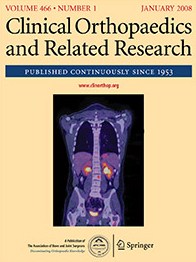
Hand & Wrist
Antegrade vs. retrograde IM pinning in displaced fifth metacarpal neck fractures
Clin Orthop Relat Res. 2015 May;473(5):1747-54.46 adult male patients with displaced fifth metacarpal neck fractures were included in the study. Patients were randomized to undergo surgery with either an antegrade intramedullary pinning technique or a retrograde intramedullary pinning technique to compare several clinical and radiographic outcomes between these procedures. The study found that while the antegrade approach yielded significantly improved clinical outcomes (range of motion (ROM), visual analogue scale (VAS) pain score, grip strength, and Disabilities of the Arm, Shoulder, and Hand (DASH) score) 3 months post-surgery, the difference was not maintained at 6 months post-surgery. Radiographic outcomes, including shortening and angulation, were also comparable between the groups 6 months post-surgery.
Unlock the full article
Get unlimited access to OrthoEvidence with a free trial
Start TrialCritical appraisals of the latest, high-impact randomized controlled trials and systematic reviews in orthopaedics
Access to OrthoEvidence podcast content, including collaborations with the Journal of Bone and Joint Surgery, interviews with internationally recognized surgeons, and roundtable discussions on orthopaedic news and topics
Subscription to The Pulse, a twice-weekly evidence-based newsletter designed to help you make better clinical decisions
Exclusive access to original content articles, including in-house systematic reviews, and articles on health research methods and hot orthopaedic topics
Or continue reading this full article
Register Now

Subscribe to "The Pulse"
Evidence-Based Orthopaedics direct to your inbox.




































